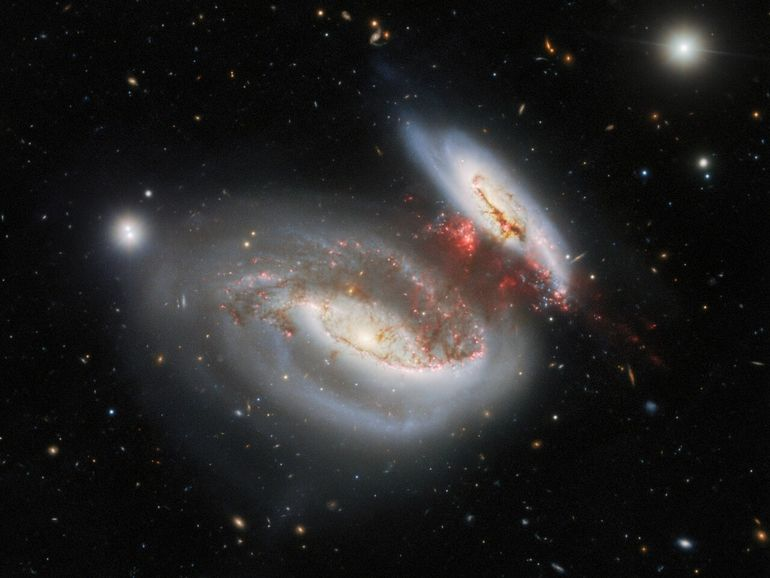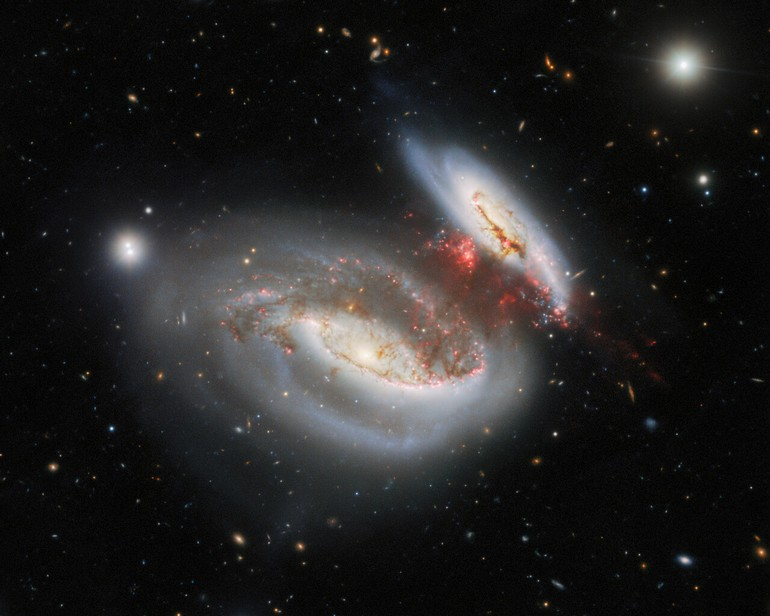Spectacular image of a collision between two galaxies

A head-on collision between two galaxies 25 to 30 million years ago gave rise to an unprecedented cosmic structure.
The Gemini North telescope in Hawaii, one of the largest and most capable in the world for detecting optical and infrared light, has captured a violent collision between two galaxies named UGC 12914 (left in the photo) and UGC 12915 (at right) which are in the constellation Pegasus 180 million light-years away.
The event, which occurred around 25-30 million years ago, gave rise to an atypical formation between the two galaxies : a gas bridge caused by the high-speed ejection of material from both sides. another that created a turbulent precipitate. The atypical appearance of this cosmic structure, which occurred when the two galaxies separated after the shock, evoked to astronomers stretched caramel. Hence the nickname "Taffy galaxies" given in reference to a famous candy popular in the United States.

Between the two galaxies UGC 12914 and UGC, we observe this gaseous bridge resulting from a mixture of molecular filaments (in brown) and clusters of hydrogen gas (in red).
Unlike other galaxy collisions that can lead to star-forming mergers, the collision between UGC 12914 and UGC was so violent that it did not promote the collection and compression of gases needed to the formation of new stars.
image one: international gemini observatory/noirlab/nsf/aura
Source : websites

